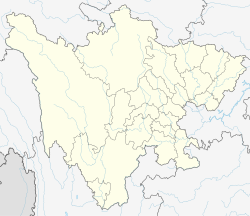| Location | |
|---|---|
| Sichuan | |
| Country | China |
| Coordinates | 30°17′46″N101°18′07″E / 30.296°N 101.302°E |
| Production | |
| Products | Lithium |
The Jiajika mine is one of the largest lithium mines in China. [1] The mine is located in Tagong township, Sichuan province, central China. [1]
The Jiajika mine has reserves amounting to 80.5 million tonnes of lithium ore grading 1.28% lithium thus resulting 1.03 million tonnes of lithium. [1]

